Ever since Jack Kerouac hit the road, the traditional US road trip has cultivated a chunky, manly mantle. But there is a slighter way to glide through this land, one laced with sparkling rosé, sea spray and sustainably led small businesses, many with families or women at the helm.
Abigail King takes us through her journey from San Francisco to Los Angeles.
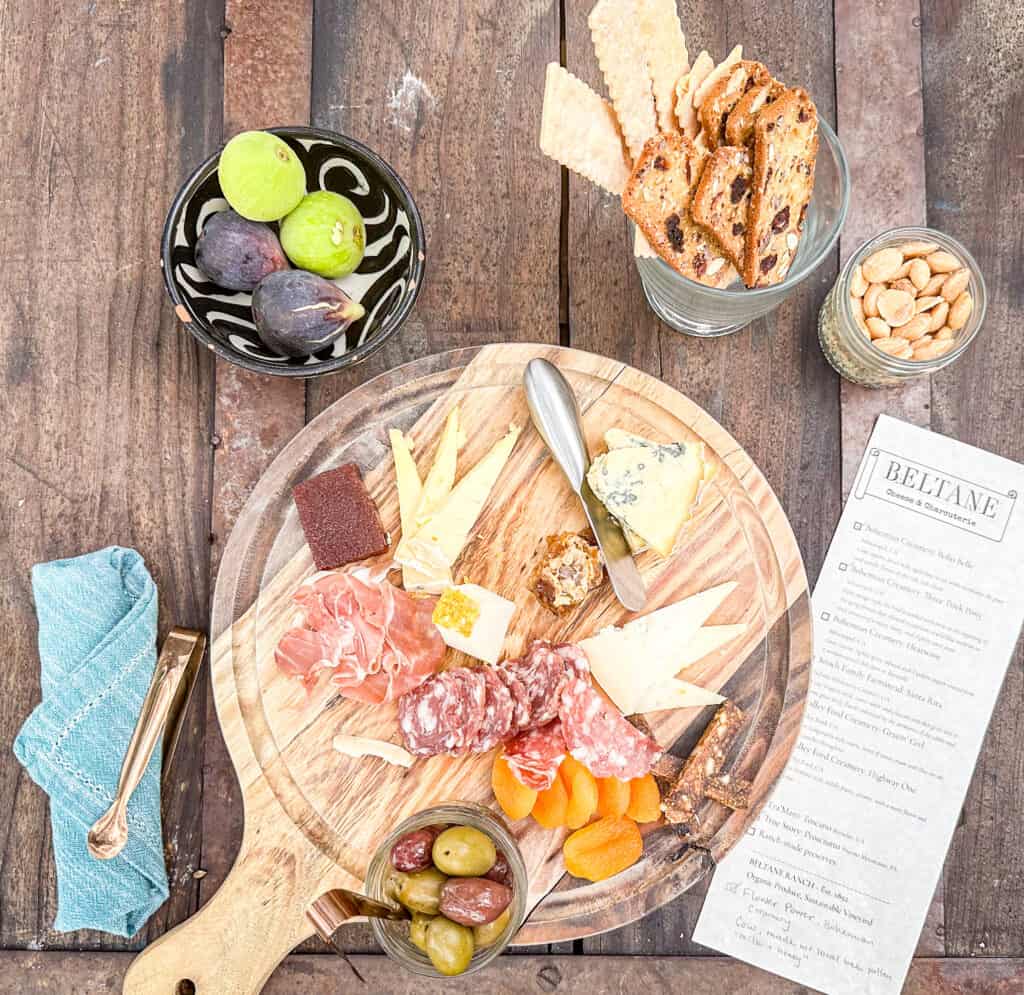
A different road trip in California
“Nothing behind me, everything ahead of me, as is ever so on the road.”
Jack Kerouac, On the Road
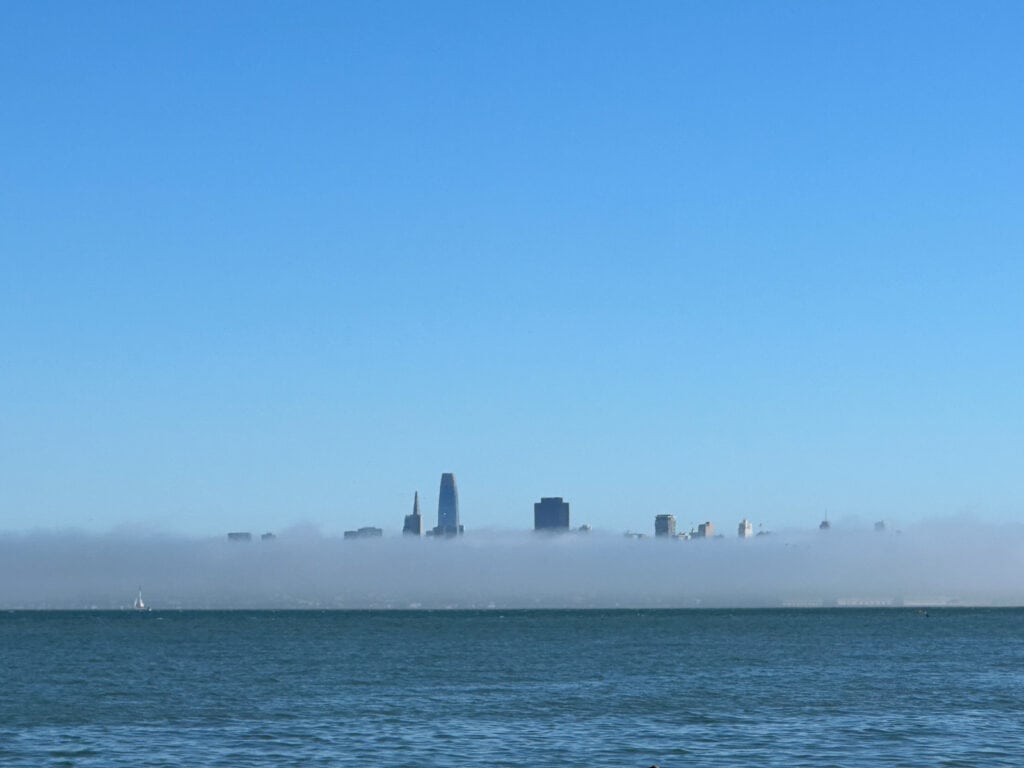
San Francisco
They say San Francisco is a mountain range of a city. With roads that zig and zag up and down, not side to side, and a fog, a majestic, brilliant, smothering fog that rises up to engulf the unwary. Such as, say, a lone woman scrabbling in the scratchy heath for a tourist-soaked view of the Golden Gate Bridge.
It was my own fault, in a way. My assignment here was to delve deep into sustainable practices in overlooked destinations, not scurry around the tourist hot spots on a completely beaten track (Streetcars – check! Chinatown – check! View of Alcatraz – check, check, checkety check!)
But when you have limited time in an iconic city, it’s hard to fight the temptation.
And so it was, that I found myself standing alone in the whiteness, disoriented with jet lag, driving on the wrong side of the road, gazing into… nothing.
On both side of the Bay that runs to the Pacific Ocean, the travel gods chuckled at my expense. I stood, confused, as others joined me, staring at an arrow that pointed into the void beneath the words Golden Gate Bridge.
Nothing.
Nothing. Just fog and nothing.
I tried to ignore the obvious link between the real fog and the metaphorical type that surrounds the development of sustainable travel. I had more practical matters to attend to right then.
It was time to leave this comfort blanket of a well-known, foggy city – and to head in search of sunshine. Northeast, to the hidden land of Sonoma.
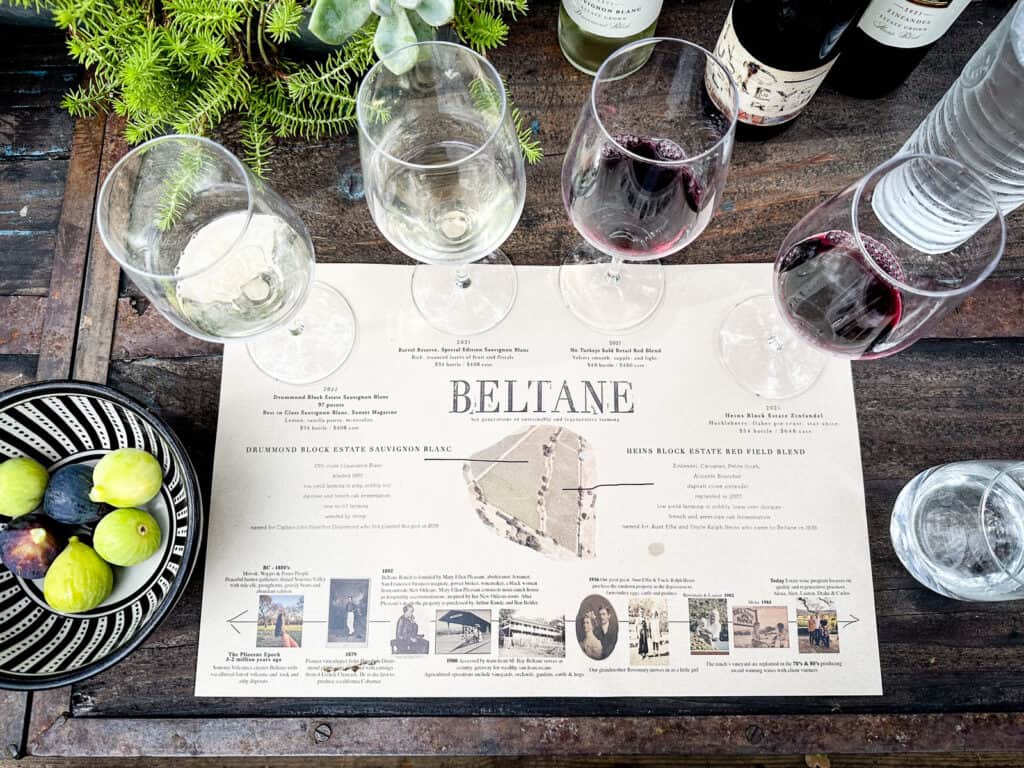
Sonoma
Sonoma, of course, is not remotely hidden to anyone with a knowledge of the area or an appreciation for California wine. Snug next to the more famous Napa Valley, the golden hills of Sonoma unroll like a dignitary’s welcome carpet, a series of rippling golden leaves and winding bends, an impossibly beautiful trail.
And my first night in Sonoma confirmed this luxurious style. I slept at the elegant Japanese themed Gaige House, with a selection of wines and sliced cheeses served each night in the main house that overlooked a small pool. The author of The Call of the Wild lived here in Glen Ellen, and so a sense of writerly romance floats through the grassy meadows and Douglas firs.
I took wine flights and nibbled on Three Trick Pony goat’s cheese at the nearby Beltane Ranch and Kivelstadt wineries as part of the Bohemian Highway Travel Co tour.
I sauntered down the road to the award-winning Glen Ellen Star to perch on a high stool while chefs sizzled and sauteed that most unlikely of vegetables: the brussel sprout. With the help of maple syrup, and a dash of culinary genius, it transformed into a masterpiece.
And so, amid the dappled sunlight of another golden orchard near Santa Rosa, the following statement took me by surprise.
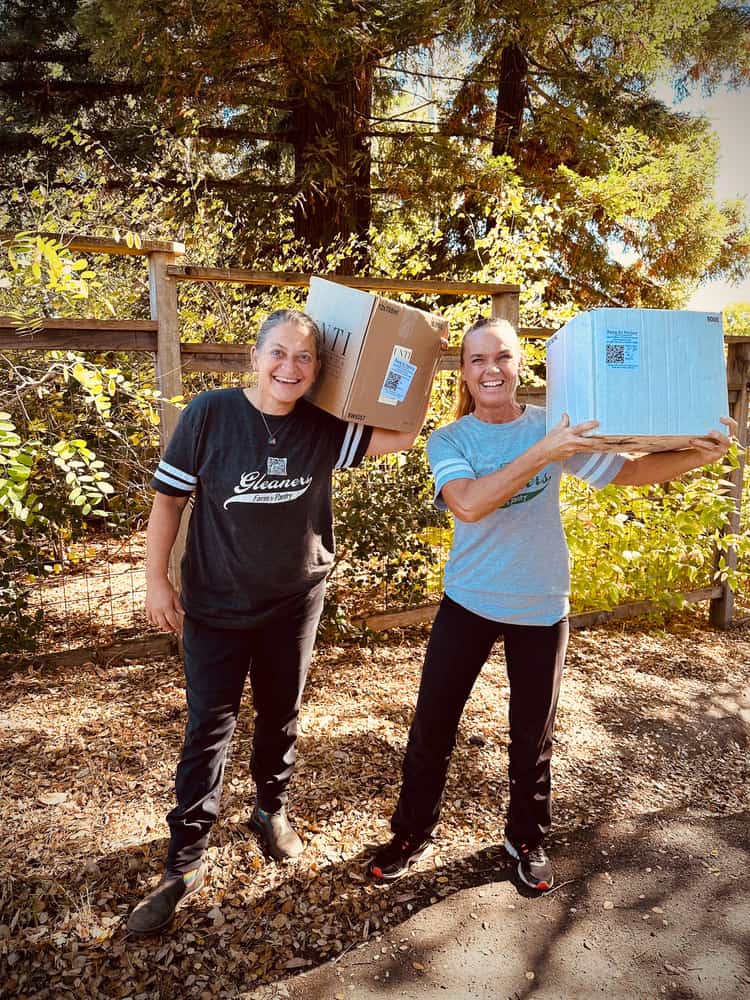
Food insecurity in California
“Twenty-three percent of the population in Sonoma are food insecure. That means that they do not know where their next meal is coming from, or they will have to skip a meal in order to pay for medicine or rent.”
So said Duskie Estes, the founder of Farm to Pantry, a gleaning initiative that collects produce that farmers don’t have the resources to harvest, and then distributes it to relevant food banks. In her former life she’d been an award-winning chef and here we were meeting on Shone Farm, a community agriculture college.
It’s not unusual to only see the best of an area when you travel but this revelation surprised me more than most. This, until now, truly had seemed the most bountiful and plentiful region I’d seen, well, anywhere.
They talked a little more about the root causes of food insecurity, the preponderance of insecure farm labour, the precarious status of immigration, the lack of a welfare safety net. But in truth the story had been there all along.
Pitching in with Farm to Pantry
At present, around 40% of fresh food ends up in landfill. Helping out with Farm to Pantry is one way to fight climate change as well as helping people with food insecurity and farmers to stay sustainable.
Farm to Pantry have around 500 regular volunteers but tourists are welcome to pitch in for as many hours as they can spare. Check the website for notices as plans change according to what’s in harvest.
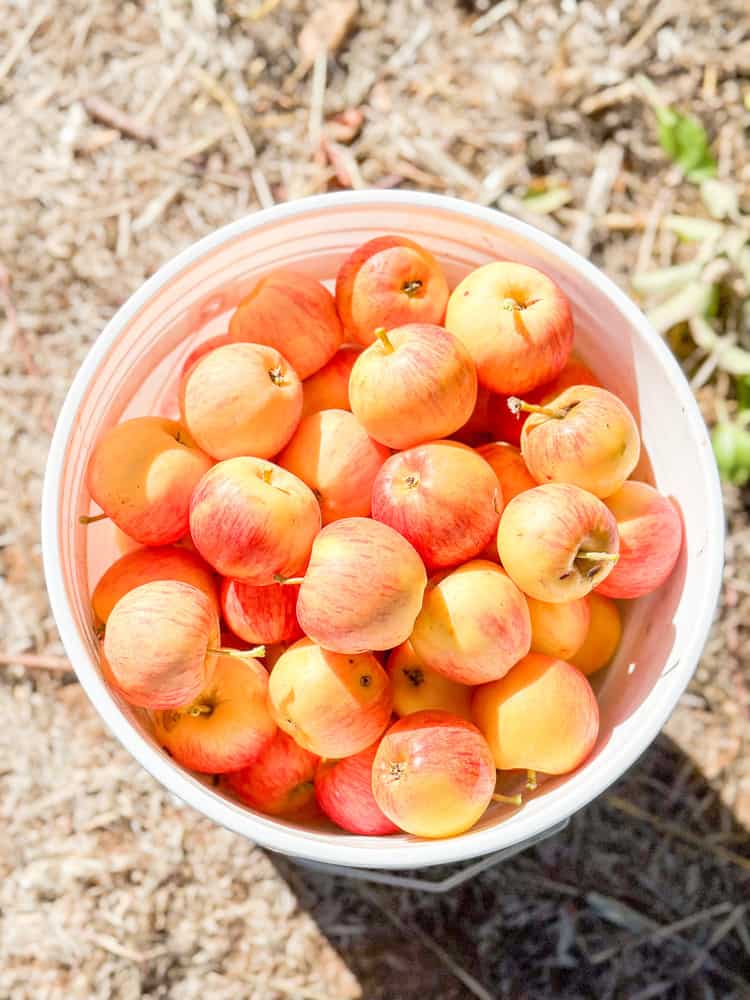
Making farming sustainable
For farming, anywhere in the world, is a tough business.
It’s one of the most established tenets of sustainable travel that family-run businesses are good, that small businesses are good. The thinking being that such businesses are likely to care more about the communities they interact with and the land they live upon. But the harsh reality is that, while that may well be true, they lie more exposed to trauma and change than the larger corporations.
As with so many aspects of sustainable travel, it’s a cause to pause for thought.
And time for thought I had, as I returned to my trusty motor and headed south towards the sea.
Did you know? 70% of the carbon footprint of wine comes from the packaging. If the love affair with the glass bottle could be switched instead for a squishy bag, then it would be a huge step forward.
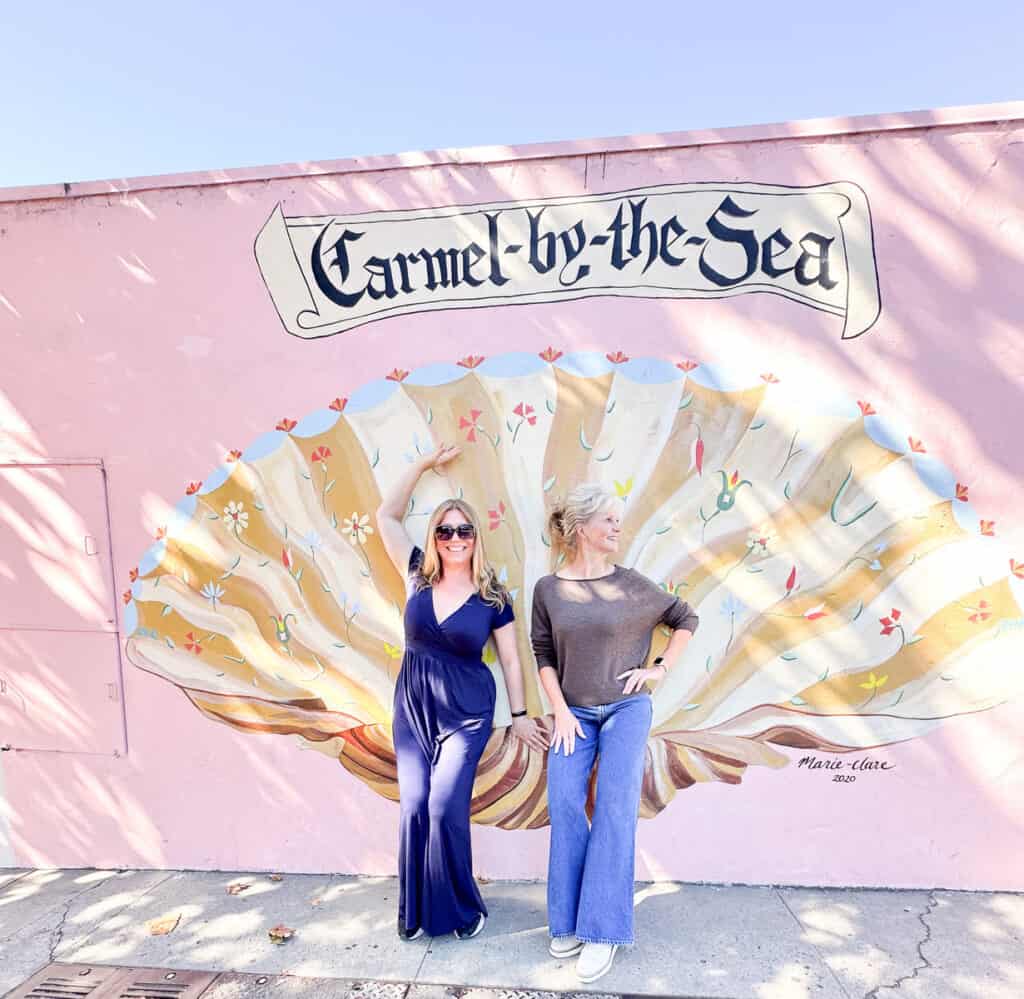
Carmel-by-the-Sea
My trusty wheels pulled up at Le Petit Pali on Ocean Avenue in Carmel-by-the-Sea, a small town that’s home to Clint Eastwood, and one which greeted me with a kir royale and a smile.
The hotel, a motel style layout after Cinderella’s fairy godmother transformation, lay uphill from the beach. The rooms decked out with luxurious linens and Gatsby-style glassware, breakfast with champagne and pastries from local bakeries.
To really get a feel for the hidden corners of this picture-perfect place, I met up with Staci, founder and owner of Carmel Food Tours.
This former interior decorator for funeral homes now runs a company that brings sustainable initiatives in her new home to life.
We started with a quirky former dairy, white bottle shaped in design, before moving on to narrow fern-fronded alleyways and secret courtyards that hide Carmel’s eighty or so art galleries.
Staci took me on a wine flight at Caraccioli Cellars and introduced the salted brown butter glaze at the Dutch Door donuts. But the standout was the story at the Carmel Honey Company.
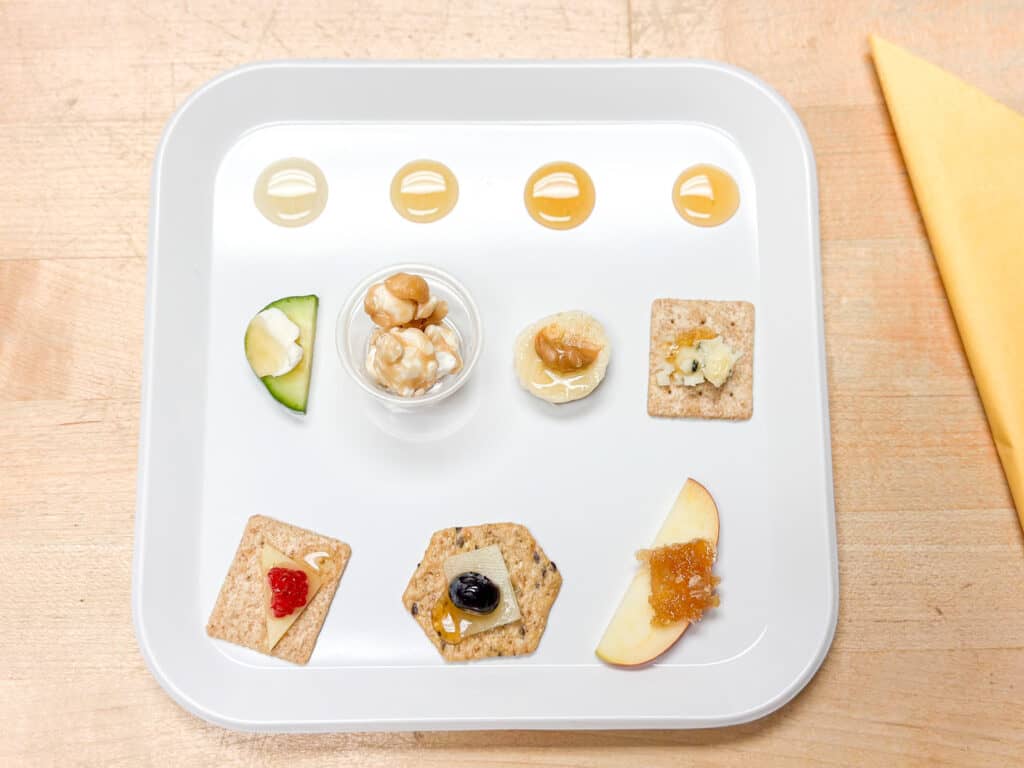
Bee serious
Yes, it’s another family-owned business with a passion for sustainability. But it’s even more humbling than normal. We meet the owners, Becky and Jacob. Jacob is only twenty-one and founded the company after a school project turned into a passion, turned into a livelihood.
He started at age eleven.
Our experience, however, starts with a honey flight instead of a wine flight. Small golden dishes glint besides intricate snacks. As with the wine, we travel light to dark, through sage honey (good for tea, orange blossom (versatile), wildflower (robust enough for a salmon or chicken glaze) and meadow foam (good with port wine, ice cream or popcorn.)
And, as ever, behind the beauty and good times, there is serious substance. I’ve known for a while, now, about the importance of bees. Shortages across the world lead to drops in pollination and biodiversity and in many parts of the world, bees are in crisis.
Small, sustainable beekeepers and honey producers are one sweet way to help.
What I didn’t know was the issue of “fake honey.” Apparently, up to 70% of shop bought honey contains rice syrup or corn syrup and, in the US at least, there is no law compelling manufacturers to put that on the label. I make a mental note to look into the situation in the UK.
Jacob owns 180 hives and produces four types of honey but the number on my lips the following morning is seventeen.
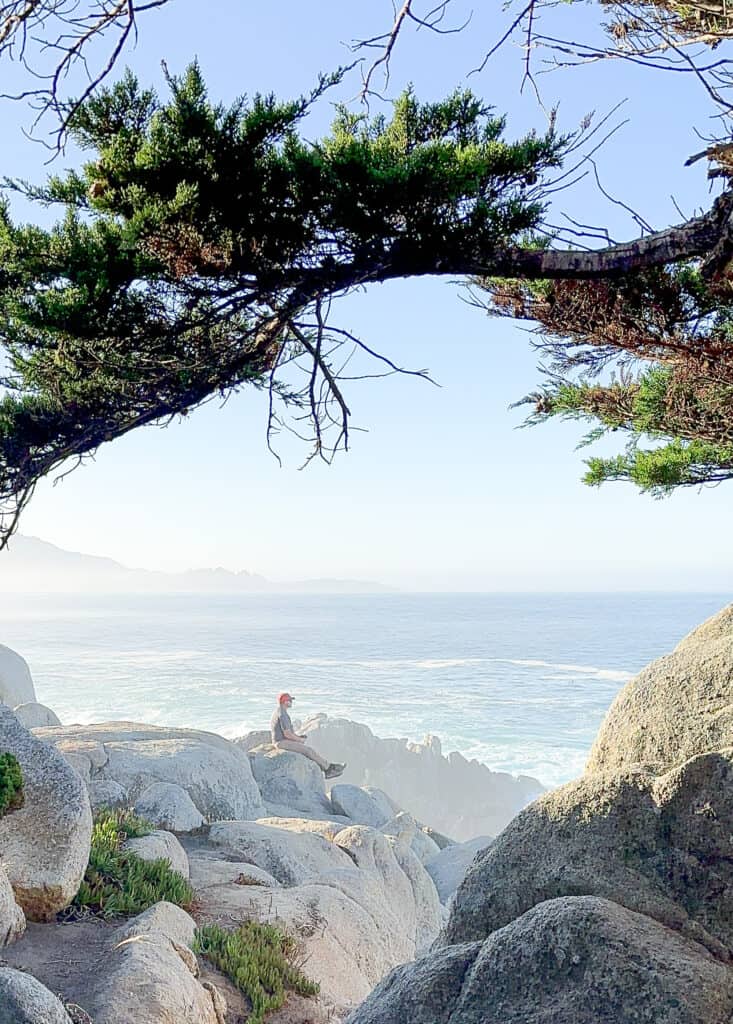
Seventeen mile high
Seventeen-mile drive rises and falls against the pacific like a love letter from the ocean to the earth, caressing the edge of the Monterey Peninsula.
Supermarket honey may be fake but this road is as real as it gets. Ghost trees at Pescadero point. Surf mistaken for snow by Spanish explorers at Cypress Point. Harbor seals, giant kelp and sea otters all the way along to Fanshell Beach.
It is, without a shadow of a doubt, the most beautiful road trip I’ve ever seen, and I’ve seen many. Those gods who laughed at my foggy travails at the Golden Gate Bridge, softened their stance through the sunshine and sea spray amid the cypress.
With many miles to go, I had to hit the road.
A quick race into the Steinbeck Museum in Salinas, home to Mice and Men, and then on into the Californian countryside.
I drove through miles and miles of wineries and rolling vineyards until I stopped at the one with the wind turbine.
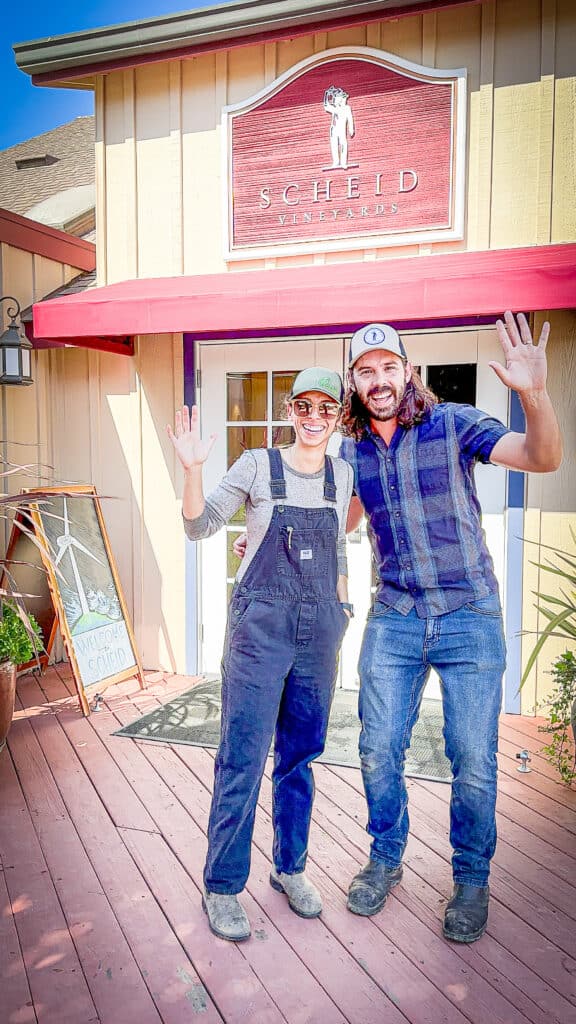
The winery with the wind turbine
While European vineyards cling to rocky outcrops and squeeze themselves into every nook and cranny, here in America, the vines have room to breathe. Breathe and sprawl like teenagers on a sofa at the weekend.
And sprawl they do.
I can see in the faces of the people who greet me at Scheid their surprise at my surprise of scale. They introduce me to their wines, sadly untasted due to drink-drive laws, lead me through their teetering walkways above giant, bubbling vats. And introduce me to their turbine, a symbol of sustainability.
Erected in 2017, it not only powers the winery itself but around 150 households nearby. Solar panels, I’m told, wouldn’t work because of fog from the coast and dust from the road. And they checked that the blades wouldn’t threaten the endangered Californian condor which roams around near here.
Certified sustainable through CSWA, the wines themselves cover quite a range, with names to match. There’s Closing Bell, a dessert wine with flavours of blackberry, plum and fig, and Odd Lot White, with notes of yellow apple and honeysuckle.
From the mountains to the coast
I swoop and rise over the Santa Ynez Mountains to arrive in Santa Barbara. The name matches that of my mother, a woman born in south Wales, a place with no resemblance to here.
Here, palm trees strut along oceanside boulevards, white Spanish mansions line the streets and the face of Ronald Reagan smiles from outside his central Ranch Center.
The sun is in full force now, ever though it’s close to twilight and I dash into a small independent winery to meet Magan and learn about Kunin wines. This family-owned business serves me a taste of natural and blonde, I make a quick stop at Gala for a bite to eat of farmer’s market produce and then to bed.
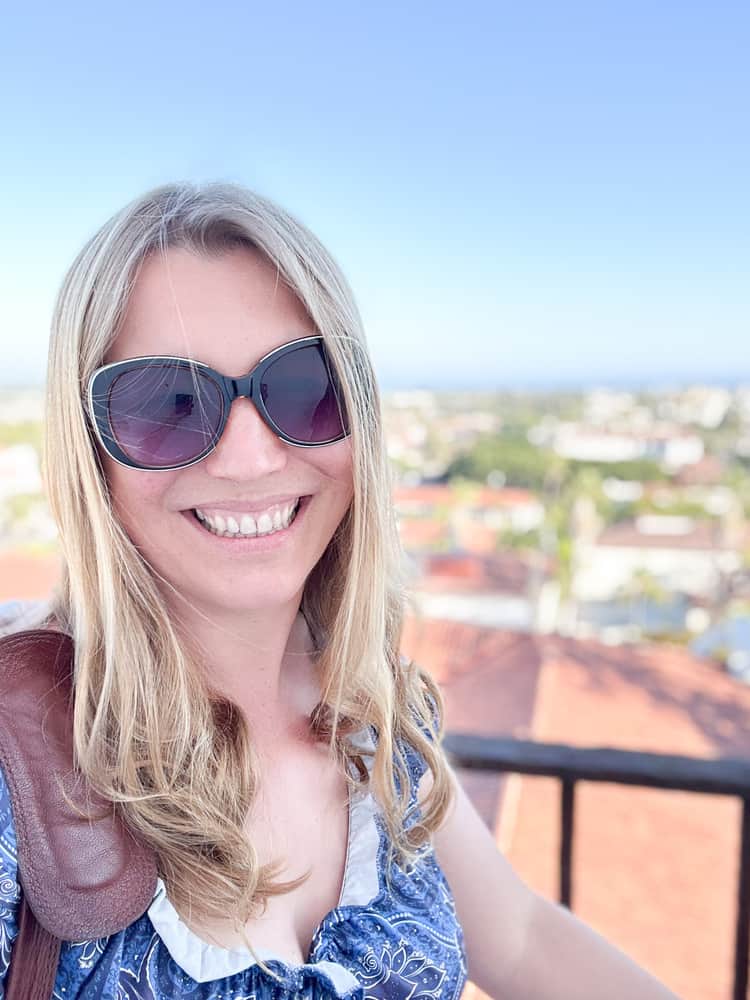
Santa Barbara
The following morning, I begin to get my bearings at the railway station, of all places on a road trip. An historic rail station, in American terms, and one which stretches across the road in an unhurried fashion.
It’s there I meet Melissa, founder of Totally Cali tours. Though the theme is wine and chocolate, we start with a deeper passion: history.
We have a lot of ground to cover. The indigenous Chumash people, the arrival of the Spanish. The Mexican period between 1820-1840 followed by the Wild West and the Gold Rush.
Saloons and rail tracks, TB and Victorian slacks. Then the earthquake in 1925 when 70% of Santa Barbara was destroyed.
The decision was made to rebuild in a more uniform style, guided by a philosophy that if people lived in beautiful surroundings, they would aim to live beautiful lives.
The film industry moved in, in the days before Hollywood, for Santa Barbara’s golden ear. Then trucking replaced the railroad and business moved to LA.
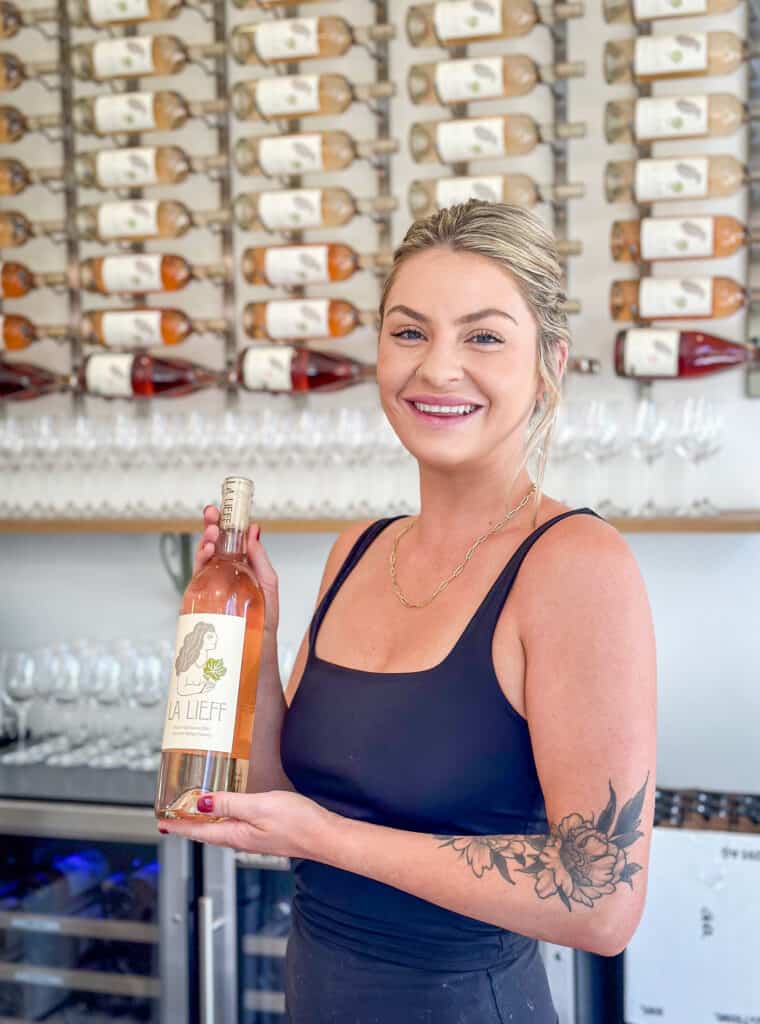
The Funk Zone
Today, we start in the Funk Zone, a curiously named district that’s risen from hard times, switching from a strong-smelling fishery to a fashionable hipster playground.
We begin in La Lieff, a female owned wine tasting business with an entire rosé wine flight. Next, we visit Chocolate Maya, a boutique chocolaterie with global sensibilities and hands on Swiss heritage. We walk along State Street, noticing painted pianos and the iconic Joe’s Cafe before arriving at the Grassini Family Tasting Rooms.
Here is a wine and chocolate pairing and, dear reader, it was at this point that I began to wonder if it was indeed possible to have too much of a good thing.
Tasty sustainable travel tips
Wine – look for sustainable certification and buy in pouches rather than glass bottles where possible.
Honey – when farmed sustainably, helps bees to survive and keeps biodiversity high. It’s worth supporting small producers wherever you travel.
Chocolate – is sadly linked with several shady practices, from modern slavery to environmental destruction. Look for high quality ingredients and no palm oil or corn syrup. Look into the Bean to Bar movement and know that small, organic farmers cannot always pay for Fair Trade accreditation.
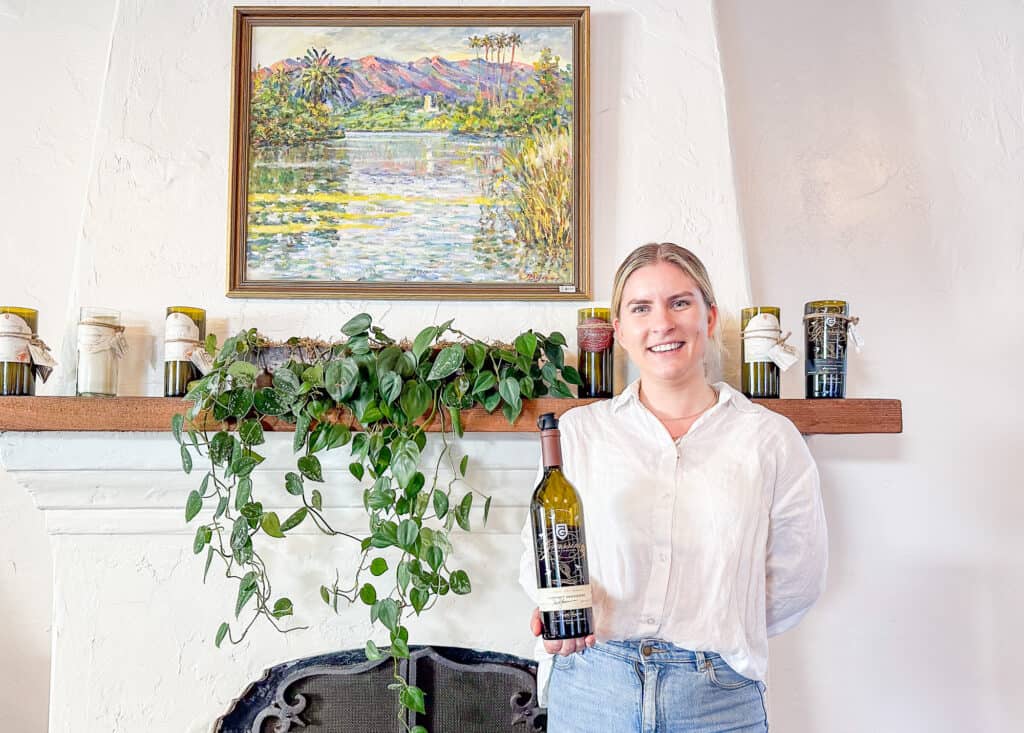
The pursuit of pleasure
The chocolates, as with the wines, run from light to dark. The wines come from the family’s vineyard, a 45-minute drive away in a place called, I kid you not, Happy Canyon. The chocolate, crafted by a local artist.
And so, we move through lemon white chocolate and sauv blanc, then lavender, pomegranate and star anise chocolate through the merlot and cab sauv blends.
I love the focus on craftsmanship, quality, and what’s often lacking in talk about sustainable enterprises: pleasure.
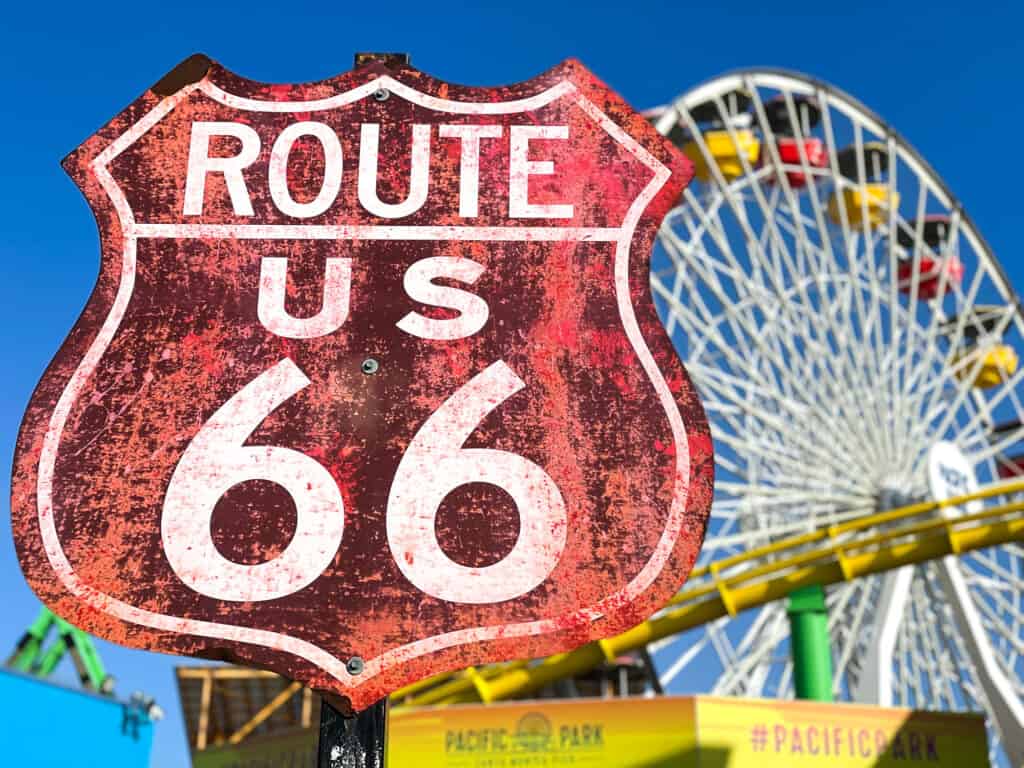
The end of the road
We walk off the chocolate with a visit to the courthouse and its towering view of Santa Barbara. A short drive to the Botanical Gardens reveals the same: rippling, glittering waves, pink and white flowers and ripe sunshine.
But now the clock is ticking, the weathervane spinning, and it is time to drive on to LAX.
After sweeping past Malibu, I alight at the iconic Santa Monica pier. Unlike the reclusive Golden Gate Bridge, the pier is bold, bright, unmistakeable.
And it also wears an iconic American road trip sign. The end of Route 66.
Undeterred by the fact that this has nothing whatsoever to do with my route, I take a photo and think of another of those Jack Kerouac sayings.
But it doesn’t quite fit. Instead, reflecting back on my journey from fog to where I am today, I think instead of one of the wines found in the heart of those Californian vineyards.
It is, indeed, sunny with a chance of flowers.
Book your California road trip
A nine-day tailor-made trip to California costs from £3,260 per person (based on two travelling). The price includes flights, fully insured rental car, accommodation and excursions. Find out more at Audley Travel (01993 838861).
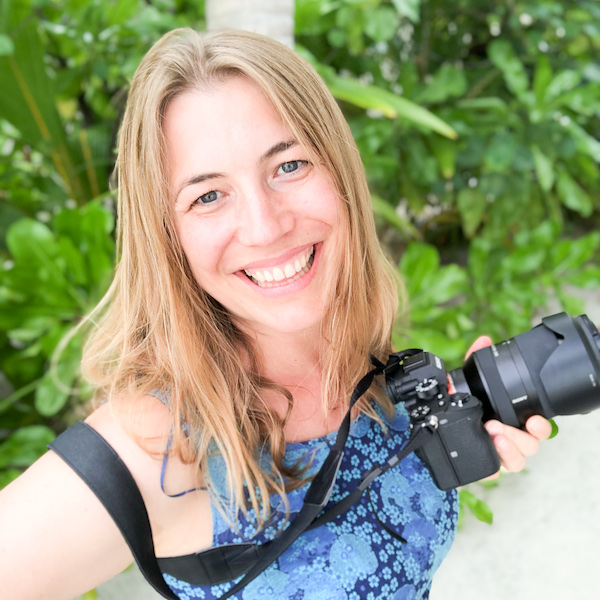
About Abigail King
Abigail King is an award-winning content creator with a passion for sustainable travel. She spoke at the High-Level EU-China Summit on Sustainable Tourism at the UNESCO Headquarters in Paris and joined a panel to talk about responsible tourism for NASA-Hybrid CoE in Helsinki.
She’s the founder of Inside the Travel Lab, described by National Geographic Traveler as “Essential Reading” and Lonely Planet as “one of the best travel blogs in the world.”
You can read more about her work on the benefits of sustainable tourism here.
And download her Road Trip Planning Toolkit here.
Disclosure – King drove from San Francisco to Los Angeles as part of a partnership with Audley Travel. As always, as ever, she kept the right to write what she likes.